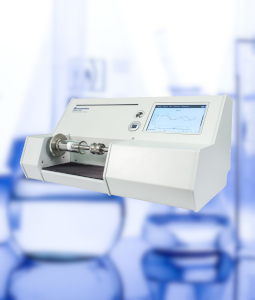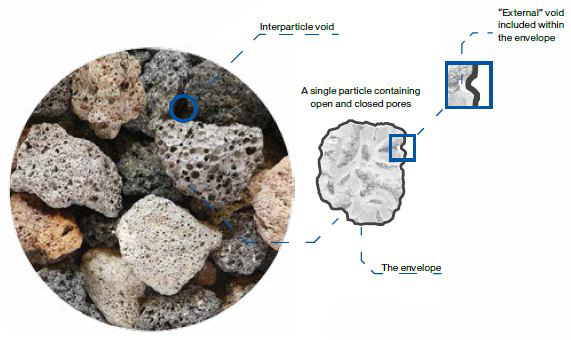
GeoPyc 1365
Measures the envelope volume and density of formed pieces without use of hazardous materials
- ▪ Highly accurate and reproducible results.
- ▪ Fast operation in a small bench-top instrument.
- ▪ Fully automated data acquisition and reporting.
- ▪ Non-destructive analysis maintains sample integrity.
- ▪ Intelligent touch panel for ease of operation and reporting.
- ▪ Available Trans-Axial Pressure (T.A.P.) analysis option to determine compressed bulk density of powders, complying with ASTM Test Method D8097.
- ▪ When combined with skeletal density, provides pore volume and porosity of formed pieces, such as roller compactor ribbons and sintered solids
Envelope Density Analyzer
The GeoPyc employs a unique displacement measurement technique that uses Dry Flo, a quasi-fluid composed of small, rigid spheres having a high degree of flow-ability. The sample is placed in a bed of Dry Flo which is agitated and gently consolidated about the sample. The GeoPyc collects the displacement data, performs the calculations, and displays or prints the results.
- Highly accurate and reproducible results
- Fast operation in a small bench-top instrument
- Fully automated data acquisition and reporting
- Nondestructive analysis maintains sample integrity
- Intelligent touch panel for ease of operation and reporting
The Technique
The GeoPyc automatically determines the volume and density of a solid object by displacement of Dry Flo, a solid medium. The medium is a narrow distribution of small, rigid spheres that have a high degree of flow ability and achieve close packing around the object under investigation. The particles are sufficiently small that during consolidation they conform closely to the surface of the object, yet do not invade pore space.
Repeatability and reproducibility are achieved by a controlled method of compaction. The sample cell in which the dry medium is placed is a precision cylinder. A plunger compresses the powder as the cell vibrates; the force of compression is selectable and, therefore repeatable from test to test. A preliminary compaction with only the displacement medium in the cell establishes a zero-volume baseline.
The sample is then placed in the cylinder with the dry medium and the compaction process is repeated. The difference in the distance ht the piston penetrates the cylinder during the test and the distance h0 it penetrates during the baseline procedure (h= h0 – ht) is used to calculate the displacement volume of the medium using the formula for the volume of a cylinder of height h, V= π r2h
The GeoPyc has multiple operational modes that are accessed through the instruments smart touch screen. Operating modes including full blank, computed blank, and reference solid calibration with variance, which allows you to optimize speed and accuracy for your specific application. During analysis, indications of progress and preliminary results make it possible to track what is occurring. Sample-specific information can be entered into the analysis reports.
Available Reports:
- Envelope Density
- Volume Calibration
- Blank Report
- Force Calibration
- Instrument Log



